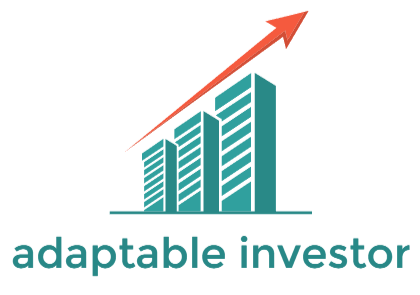Millions of Americans who will be looking to retire soon are in for a bumpy ride, as challenging economic conditions on the market are eating away at their life savings and retirement funds.
According to a recent Forbes article, Americans on average retire around the age of 63, with some even looking to retire earlier if their financial situation allows them to. Even as many approaches this age, nearly a quarter of adults still have no retirement savings, and even those with savings are still set to fall short of their financial goals.
This shows the emphasis on high-dividend stocks.
For the many Americans who have been planning their retirement fund since they entered the workforce, the recent economic downturn has meant that many who heavily invested in the stock market have taken a severe beating.
With record high inflation, aggressive interest rate hikes, and now a looming recession, experts are suggesting that soon-to-be-retired and those already retired should revisit their investment portfolios to ensure it is secure to withstand any unforeseen economic downturn.
Retirement Is Becoming Costly
Consumer prices haven’t been this high in more than four decades, as the Consumer Price Index (CPI) hit another fresh high of 9.1% at the end of June. On top of rising consumer stables, soaring gas prices have led to many manufacturers and business owners passing rising costs onto consumers, leading to more Americans having to live paycheck-to-paycheck.
As part of their arsenal to combat rising inflation, which has steadily helped cool down excessive spending, the Federal Reserve has been raising its base interest rate, as it tries to push the benchmark between 2.25% – 2.5%. At the end of July, the Fed hiked rates by another 75 basis points, slowly working towards their desired benchmark.
Several factors, both domestically and from abroad have made it increasingly hard for many Americans to cope with the high cost of living, even for those earning above the national average.
Those in retirement, or soon to exit the labor force are more aware of the high costs eating away at their investment and retirement portfolios. Findings from a 2022 State of Retirement Planning Study by Fidelity Investment indicated that at least 1 in 4 respondents expressed having less confidence than before the events of the past two years.
The same Fidelity study revealed that a staggering 71% of Americans are concerned about the impact of inflation on their retirement preparedness. In addition, 31% cited that they are not sure how to keep up with their retirement savings if prices and consumer goods keep rising.
The state of retirement, by judgment, has far worsened than what many have thought it to be. As markets flash warning signs of a looming recession, and bearish investors start preparing for the worst, what are retirees who’ve heavily invested in the stock market to do?
Diversify Investment Portfolios
The recent downturn in the market has made conditions for many Americans who retired early on in the pandemic harder to live out their golden years.
While market conditions have steadily been gaining traction, many of those already in retirement, and who are living off investment income might need to start thinking of diversifying their investment portfolio or looking to return to the workforce in the coming years.
For many soon-to-be or retired Americans, it can be a tough call to make on what diversifying their investment should look like.
On the one hand, there’s an exodus of experts that suggest investors look for companies in recession-resistant industries. Companies that fall under consumer goods, utilities, and large-cap U.S. banks are usually a suitable choice.
Then some believe a small portion of your portfolio should be dedicated to Treasury bonds. At the end of July, the benchmark 10-year Treasury reached 3.1% after the Fed announced its rate hike. Now seeing as bond prices and interest rates run in opposite directions, it could mean that bond prices will be able to recover if the stock market takes another nose dive, prompting the Feds to lower rates until market recovery.
Though there are contrasting ways in which retired investors can diversify their investment portfolios, choosing a logical option, while still being financially viable during a changing economic cycle will help ensure a recession-resistant portfolio in the long run.
Buying High-Yielding Dividend Stocks
The market sell-off left many investors bearish over whether traditional large-cap dividend stocks will be able to survive the changing economic cycle. Yet, to many investors’ shrugging sentiment, a handful of companies are still able to offer shareholders profits regularly, with some currently yielding at 4% or more.
To solidify yourself in the choppy conditions, and to ensure your investment income will still be able to cover your basic needs, here are some of the best high-yielding stock picks for retired investors at relatively affordable market prices.
Energy & Utilities
Chevron (CVX)
As one of the largest energy and oil providers in America, Chevron has made uninterrupted dividend payouts from as early as 1912 and currently yields at 3.2%. Throughout most of its operations, Chevron has been running its business relatively conservative, as it looks to grow the development of its baseline operations while keeping its borrowing capacity to a minimum.
This strategy, among others, has meant that Chevron can protect its dividend, even if oil prices experience a decline such as at the start of the pandemic in 2020. For retired investors who are interested in purchasing CVX, many should remember the high risk and volatility that comes with investing in such a large-cap utility provider.
Enbridge (ENB)
A bit off the beaten track, but Enbridge today is one of the largest energy companies in Northern America, carrying oil and natural gas from Canada through America towards the Gulf Coast.
Seeing as the pipeline provider is not reliant on the prices of oil or natural gas, and operates mainly on the volumes that flow through their pipes, investors can enjoy a 6.2% dividend yield at current share prices.
Enbridge a solid strategy, as payouts only consume under 60% of their distributable cash flow. For investors, ENB is a sustainable investment choice that has paid increasing dividends for the past 26 years.
Banking
JP Morgan Chase (JPM)
For some seasoned investors, JP Morgan Chase is considered one of the few foolproof large-cap banking stocks that still offer significant yield even as market conditions dwindle.
During its most recent earnings call, the large bank offered some relief to investors, showing improvements in its net interest income, net interest margins, and loan growth. JPM currently pays an above-average yield of 3.5% and holds a strong track record compared to other larger U.S. banks.
Though JPM has some positive sides, there’s also the consideration of what could happen in the coming months if the market is unable to sidestep a possible recession. As the Fed looked to aggressively raise hikes in hopes that it could dampen inflation, JP Morgan noted in its earnings call that consumer credit and spending had to cool down.
This could impact investor interest, but for retired investors willing to hold on to JPM this could be a sign of value growth over the coming years.
Consumer Staples
Kimberly-Clark (KMB)
As with many consumer companies in this category, none other has raised its dividends for more than 49 consecutive years, making Kimberly-Clark one of the oldest Dividend Aristocrats.
Share prices are quite reasonable if you have to consider that brands owned by Kimberly-Clark – including Huggies, Kleenex, and Scott – are used by one-quarter of the world’s population.
Potential investors and current shareholders are set to enjoy a 3.5% yield on KMB. Kimberly-Clark has become one of the most reliable, and sustainable choices among consumer staples, as it offers a strong track record of raising dividends, and already has well-established consumer support.
Telecommunications
AT&T (T)
Not many telecommunication companies have managed to perform as well under turbulent conditions as AT&T. Even though the wireless carrier had to lower its dividend in the last few months, shareholders are still able to pull a 5.7% yield from AT&T shares.
Though the lowering of the dividend payouts isn’t seen as a bad thing necessarily, as this allowed the company to increase its free-flowing cash, which in essence is needed to help control the company’s incurring debt.
There’s a bit more stability when it comes to AT&T as the carrier is used by roughly 67.5 million American consumers. Even as consumers try to get back on excessive spending, seeing many slash their carrier bills and other luxury items, AT&T managed to still come out on top as one of the best performing high-yielding dividend stock purchases.
Verizon Communications (VZ)
Another favorite pick among communication stocks is Verizon, which has for some time now been building a strong track record for becoming a sustainable dividend stock purchase for many retired investors.
Over the last three decades, Verizon, and its many other predecessors have uninterruptedly paid dividends to shareholders, even as market conditions turned red. Today, shareholders collect the 5.0% yield of VZ stock, and the company has been considered a blue-chip stock.
The company has a solid operational and marketing strategy that has worked well for investors. Investors can be assured that Verizon is set to grow in the coming years, as the need for mobile devices and mobile services only increases.
Real Estate
Realty Income Corp. (O)
As Americans left the pandemic in their rear view, and with some families having excess savings to spend on real estate, the housing market experienced a sudden boom throughout the greater parts of 2020 and 2021.
Now, as interest rates creep higher, many are certain that housing prices are set to come down in the coming months. The matter of fact here is that it left real estate giants such as Realty Income with an opportunity to snatch up affordable property and real estate across the country when prices were considerably lower than what they are right now.
Today, Realty Income is a Real Estate Investment Trust that owns a consortium of more than 1,300 different real estate options across the country and has an average 98.5% occupancy rate. In addition to this, around 99% of its contractual agreements with its tenants include annual rent increases, meaning the company will always have enough free-flowing cash to splurge on hefty shareholder dividends. Realty Income currently yields around 5.0.%
National Retail Properties (NNN)
Owning more than 3,271 properties across 48 states, and with roughly 370 tenants in 37 different industries, National Retail Properties has a strong track record which has, in turn, helped it raise its dividend for 32 consecutive years.
NNN currently yields at 4.8%, slightly lower than competing Realty Income, but its business model ensures that shareholders will constantly enjoy high-yielding dividends regardless of market conditions.
Its current business strategy focuses on resilient business types such as convenience stores, automotive, and parts of the hospitality industry. Top-rated tenants include 7-Eleven, Mister Car Wash, and Camping World, all well-known consumer brands that have been resilient throughout the last few economic cycles.
Pharmaceuticals
AbbVie (ABBV)
AbbVie wasn’t well-known before 2013, and in 2021 the pharmaceutical giant made major headlines, as it generated more than $20 billion in profits for its headlining drug, Humira.
Though the type surrounding Humira has somewhat cooled, the company has been able to increase dividends for the past five years with an average yield of 4.0%. There has been substantial cash flow due to the success of Humira, but seeing as their exclusive rights are set to expire in the U.S. by next year, the company is rapidly looking to develop new drugs and pharmaceuticals that can help it remain viable throughout the coming years.
Final Thoughts
Retired investors have some hard choices to make in the coming months, either face financial scrutiny or take the plunge and head back to the labor force as a way to secure financial conditions as the economic cycle takes hold of savings and retirement investment portfolios.
Luckily, for those who are willing to adjust to the turbulent conditions, there is hope that resides at the end of the tunnel. This would however mean that retired investors take more caution when diversifying their portfolios, but also look to purchase some of the low-hanging fruit that can prove well-worth their time and their investment.
So, where should you invest $100 right now?
Our award-winning analyst team just revealed what they believe are the 5 top under-the-radar income stocks for investors to buy right now…






